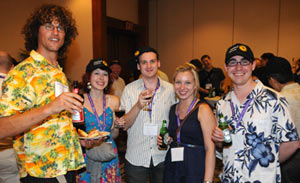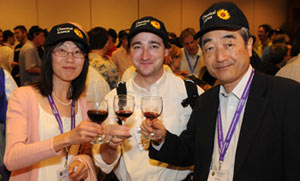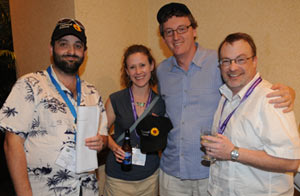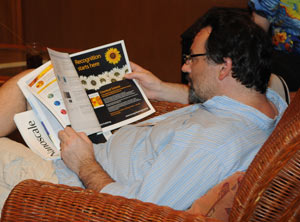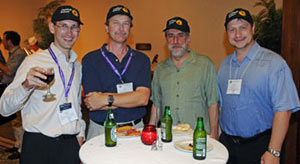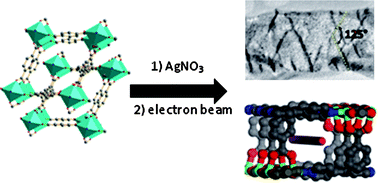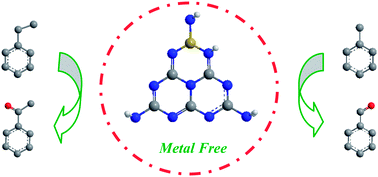This month sees the following articles in Chemical Science that are in the top ten most accessed:-
Amine directed Pd(ii)-catalyzed C-H bond functionalization under ambient conditions
Benjamin Haffemayer, Moises Gulias and Matthew J. Gaunt
Chem. Sci., 2011, Advance Article, DOI: 10.1039/C0SC00367K, Edge Article
Site-specific photocatalytic splitting of methanol on TiO2(110)
Chuanyao Zhou, Zefeng Ren, Shijing Tan, Zhibo Ma, Xinchun Mao, Dongxu Dai, Hongjun Fan, Xueming Yang, Jerry LaRue, Russell Cooper, Alec M. Wodtke, Zhuo Wang, Zhenyu Li, Bing Wang, Jinlong Yang and Jianguo Hou
Chem. Sci., 2010, 575-580, DOI: 10.1039/C0SC00316F, Edge Article
Dialkylbiaryl phosphines in Pd-catalyzed amination: a user’s guide
David S. Surry and Stephen L. Buchwald
Chem. Sci., 2011, Advance Article, DOI: 10.1039/C0SC00331J, Perspective
Total synthesis of all (-)-agelastatin alkaloids
Mohammad Movassaghi, Dustin S. Siegel and Sunkyu Han
Chem. Sci., 2010, 561-566, DOI: 10.1039/C0SC00351D, Edge Article
Cyclopropenium-activated Beckmann rearrangement. Catalysis versus self-propagation in reported organocatalytic Beckmann rearrangements
Christine M. Vanos and Tristan H. Lambert
Chem. Sci., 2010, 705-708, DOI: 10.1039/C0SC00421A, Edge Article
N-heterocyclic carbenes which readily add ammonia, carbon monoxide and other small molecules
Ulrich Siemeling, Christian Färber, Clemens Bruhn, Michael Leibold, Detlef Selent, Wolfgang Baumann, Moritz von Hopffgarten, Catharina Goedecke and Gernot Frenking
Chem. Sci., 2010, 697-704, DOI: 10.1039/C0SC00451K, Edge Article
Diamine ligands in copper-catalyzed reactions
David S. Surry and Stephen L. Buchwald
Chem. Sci., 2010, 13-31, DOI: 10.1039/C0SC00107D, Perspective
Palladium-catalyzed coupling of functionalized primary and secondary amines with aryl and heteroaryl halides: two ligands suffice in most cases
Debabrata Maiti, Brett P. Fors, Jaclyn L. Henderson, Yoshinori Nakamura and Stephen L. Buchwald
Chem. Sci., 2011, Advance Article, DOI: 10.1039/C0SC00330A, Edge Article
Continuous flow multi-step organic synthesis
Damien Webb and Timothy F. Jamison
Chem. Sci., 2010, 675-680, DOI: 10.1039/C0SC00381F, Minireview
The organocatalytic three-step total synthesis of (+)-frondosin B
Maud Reiter, Staffan Torssell, Sandra Lee and David W. C. MacMillan
Chem. Sci., 2010, 37-42, DOI: 10.1039/C0SC00204F, Edge Article
Why not take a look at the articles today and blog your thoughts and comments below.
Fancy submitting an article to Chemical Science? Then why not submit to us today or alternatively email us your suggestions.













